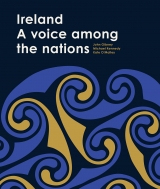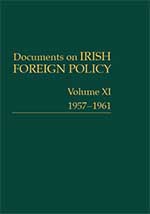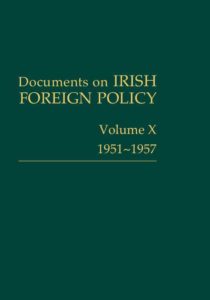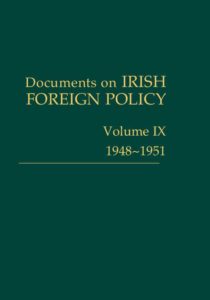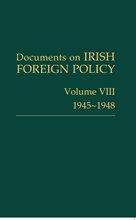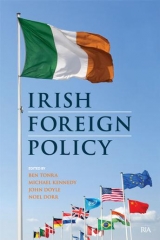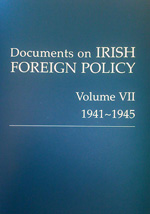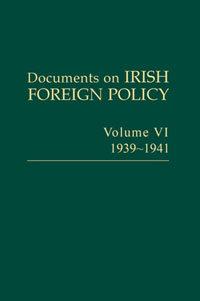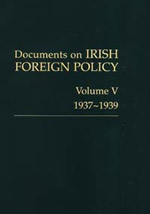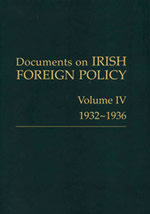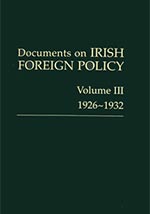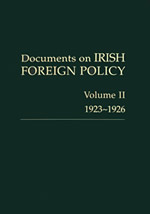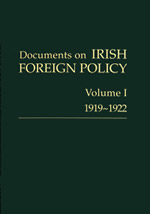Publications
Ireland: a voice among the nations
Volume XI 1957-1961
Volume X 1951 – 1957
Volume IX 1948 – 1951
Volume VIII 1945 – 1948
Irish Foreign Policy
Structured along the traditional lines of comparative foreign policy.
Introduces the historical context and presents the policy-making processes and actors.
Themed chapters address context, contemporary policy issues and future challenges in relation to Ireland’s foreign policy across a number of critical areas.
Discusses the challenges posed to Ireland’s foreign policy in the international system and through its membership of the European Union.
Case studies that focus on a specific period or issue are used throughout the text and are illustrating the larger themes within Irish foreign policy.
Written in an open and accessible style by leading academic analysts and practitioners of Irish foreign policy.
Volume VII 1941 – 1945
Volume VI 1939 – 1941
Volume V 1937 – 1939
Volume IV 1932 – 1936
Volume III 1926 – 1932
Volume II 1923 – 1926
Volume I 1919 – 1922
